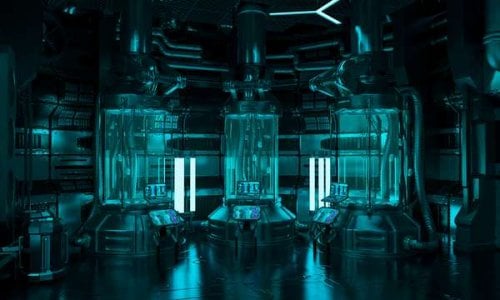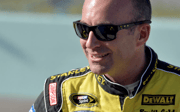Experts make history: Sydney man cryogenically frozen in regional NSW facility
- Replies 16
The concept of immortality has long been a fixture of human imagination, often relegated to the realms of mythology and science fiction.
However, the future has arrived a bit earlier than expected in a quiet corner of regional New South Wales.
A team of experts marked a significant milestone in the Southern Hemisphere's journey towards the tantalising possibility of life after death.
Philip Rhoades and his team at Southern Cryonics made history by cryogenically freezing their first client.
The groundbreaking event took place at the Holbrook facility, where a Sydney man in his 80s, now known as Patient One, has been preserved in the hope that one day, medical advancements will allow him to be revived and given a second chance at life.

This remarkable achievement is not just a first for the Southern Hemisphere but also a testament to the dedication and preparation of the Southern Cryonics team, who have been gearing up for this moment for over a decade.
‘[It was] very stressful,’ Southern Cryonics' facility manager remarked.
‘That was what was keeping me awake for a week because there are a number of different procedures to go through for different days, and there were a number of situations that might have gone wrong if we hadn't prepared properly.’
The Southern Cryonics team was poised and getting ready to receive bodies this year, but their initial client came as a bit of a surprise.
‘There were a couple of other people who were existing members who we thought might be likely candidates for being the first but, as it turned out, it was someone who wasn't an existing member,’ Mr Rhoades explained.
‘His family rang up out of the blue and we had about a week to prepare and get organised.’
Mr Rhoades mentioned that the team had conducted tests on all cryonics equipment and were essentially ready.
‘But it's still a little bit different when you are doing a real case,’ he pointed out.
The first client passed away on May 12, 2024, at an inner Sydney hospital.
The 10-hour procedure to preserve his body, with the aim of eventual revival, commenced promptly.
Mr Rhoades had been patiently awaiting news of the client's impending passing in Sydney. He immediately travelled to the hospital upon receiving word, stopping to procure bags of ice along the way.
The client's death certificate was promptly issued, and his body was transferred to the hospital's cold storage room and surrounded by ice to lower its temperature to approximately 6 degrees Celsius.
Subsequently, the client was transferred to A O'Hare Funeral Directors at Leichhardt, where medical professionals and perfusionists, skilled in operating heart-lung bypass machines, worked to circulate a liquid, acting as a form of antifreeze, throughout the body to aid in cell preservation and reduce the body's temperature.
Following this process, the client was encased in a specialised sleeping bag and surrounded by dry ice, gradually bringing his body temperature down to around minus 80 degrees Celsius.
Finally, at the Holbrook facility, the client's temperature was lowered to approximately minus 200 degrees Celsius in a computer-controlled cooling chamber before being placed in a dewar tank—a specialised vacuum storage vessel that can hold up to four people.
‘We went through using crash test dummies and other things to make it as real as possible for all the testings that we went through, so all of that groundwork paid off,’ Mr Rhoades shared.
The cost of this cutting-edge service was not insignificant. The client's preservation cost $170,000, plus additional fees for the medical team's involvement.
This highlighted the financial commitment required and the logistical challenges of performing such procedures outside major metropolitan areas.
‘With the people who are involved, all the different professionals, it's much easier if it happens in Sydney or possibly Melbourne,’ Mr Rhoades stated.
‘If you started getting out into the regional areas or the other states it starts becoming more difficult.’
Professor Bruce Thompson, Head of the Melbourne School of Health Science, likened the process to ‘Star Trek in play’ and expressed reservations regarding the science and ethics within the field.
Professor Thompson explained that while a small glass vial containing a few hundred frozen cells can currently be regenerated, he emphasised that this is far from the process of thawing out an entire human body, addressing the medical condition that caused their demise, and resurrecting them without harm.
‘I know the work just to actually unthaw some cells that are just sitting in a small little test tube and then making them alive again is a significant process,’ he pointed out.
‘Doing that for a whole human body—and it died for a reason at the end of the day—and then reversing that and then reviving that is a very, very long time away.’
Professor Thompson acknowledged the controversy surrounding the cryonics industry and recognised the ethical dilemmas associated with reviving individuals from death.
‘The people who are actually doing this business are taking money off people at a time when [the client] is very, very vulnerable and, at this stage, there is no prospect at being able to revive that person and reverse this process,’ he argued.
He also stated that the fields of science, ethics, and business models about the process were ill-prepared, but he did not dismiss the possibility of eventual success in the far-off future.
‘Never say never to anything because in my life I have seen some amazing things happen,’ he noted.
Despite the controversies, the Holbrook facility is preparing for the future, with plans to accommodate up to 40 bodies and the potential for expansion.
More than 30 founding members have already invested $50,000 each to secure their preservation space, with another 10 annual members waiting in the wings.
As for Mr Rhoades, now 72, his thoughts turned to the legacy of Southern Cryonics and the hope that someone younger will continue the pioneering work he has started.
‘I'm a little bit anxious…so it would be nice if there was a 50-year-old someone who had similar skills or experience who might be able to take over if I get hit by a bus or something,’ he said.
The recent cryogenic freezing of a Sydney man in regional NSW marks a significant milestone in the realm of life extension and the pursuit of immortality.
This groundbreaking event has sparked widespread discussion about the ethical implications of such endeavours, particularly as the wealthy continue to invest millions in life-extension research.
Critics question whether the pursuit of prolonging life indefinitely holds any ethical value, raising concerns about equity, resource allocation, and the fundamental nature of existence itself.

What are your thoughts on cryonics and the possibility of life after death? Would you consider such a service for yourself or a loved one? Join the conversation in the comments below and share your views on this intriguing topic.
However, the future has arrived a bit earlier than expected in a quiet corner of regional New South Wales.
A team of experts marked a significant milestone in the Southern Hemisphere's journey towards the tantalising possibility of life after death.
Philip Rhoades and his team at Southern Cryonics made history by cryogenically freezing their first client.
The groundbreaking event took place at the Holbrook facility, where a Sydney man in his 80s, now known as Patient One, has been preserved in the hope that one day, medical advancements will allow him to be revived and given a second chance at life.

Southern Cryonics, based in Holbrook, NSW, has cryogenically frozen its first client, marking the first recorded instance in the Southern Hemisphere. Credits: Shutterstock
This remarkable achievement is not just a first for the Southern Hemisphere but also a testament to the dedication and preparation of the Southern Cryonics team, who have been gearing up for this moment for over a decade.
‘[It was] very stressful,’ Southern Cryonics' facility manager remarked.
‘That was what was keeping me awake for a week because there are a number of different procedures to go through for different days, and there were a number of situations that might have gone wrong if we hadn't prepared properly.’
The Southern Cryonics team was poised and getting ready to receive bodies this year, but their initial client came as a bit of a surprise.
‘There were a couple of other people who were existing members who we thought might be likely candidates for being the first but, as it turned out, it was someone who wasn't an existing member,’ Mr Rhoades explained.
‘His family rang up out of the blue and we had about a week to prepare and get organised.’
Mr Rhoades mentioned that the team had conducted tests on all cryonics equipment and were essentially ready.
‘But it's still a little bit different when you are doing a real case,’ he pointed out.
The first client passed away on May 12, 2024, at an inner Sydney hospital.
The 10-hour procedure to preserve his body, with the aim of eventual revival, commenced promptly.
Mr Rhoades had been patiently awaiting news of the client's impending passing in Sydney. He immediately travelled to the hospital upon receiving word, stopping to procure bags of ice along the way.
The client's death certificate was promptly issued, and his body was transferred to the hospital's cold storage room and surrounded by ice to lower its temperature to approximately 6 degrees Celsius.
Subsequently, the client was transferred to A O'Hare Funeral Directors at Leichhardt, where medical professionals and perfusionists, skilled in operating heart-lung bypass machines, worked to circulate a liquid, acting as a form of antifreeze, throughout the body to aid in cell preservation and reduce the body's temperature.
Following this process, the client was encased in a specialised sleeping bag and surrounded by dry ice, gradually bringing his body temperature down to around minus 80 degrees Celsius.
Finally, at the Holbrook facility, the client's temperature was lowered to approximately minus 200 degrees Celsius in a computer-controlled cooling chamber before being placed in a dewar tank—a specialised vacuum storage vessel that can hold up to four people.
‘We went through using crash test dummies and other things to make it as real as possible for all the testings that we went through, so all of that groundwork paid off,’ Mr Rhoades shared.
The cost of this cutting-edge service was not insignificant. The client's preservation cost $170,000, plus additional fees for the medical team's involvement.
This highlighted the financial commitment required and the logistical challenges of performing such procedures outside major metropolitan areas.
‘With the people who are involved, all the different professionals, it's much easier if it happens in Sydney or possibly Melbourne,’ Mr Rhoades stated.
‘If you started getting out into the regional areas or the other states it starts becoming more difficult.’
Professor Bruce Thompson, Head of the Melbourne School of Health Science, likened the process to ‘Star Trek in play’ and expressed reservations regarding the science and ethics within the field.
Professor Thompson explained that while a small glass vial containing a few hundred frozen cells can currently be regenerated, he emphasised that this is far from the process of thawing out an entire human body, addressing the medical condition that caused their demise, and resurrecting them without harm.
‘I know the work just to actually unthaw some cells that are just sitting in a small little test tube and then making them alive again is a significant process,’ he pointed out.
‘Doing that for a whole human body—and it died for a reason at the end of the day—and then reversing that and then reviving that is a very, very long time away.’
Professor Thompson acknowledged the controversy surrounding the cryonics industry and recognised the ethical dilemmas associated with reviving individuals from death.
‘The people who are actually doing this business are taking money off people at a time when [the client] is very, very vulnerable and, at this stage, there is no prospect at being able to revive that person and reverse this process,’ he argued.
He also stated that the fields of science, ethics, and business models about the process were ill-prepared, but he did not dismiss the possibility of eventual success in the far-off future.
‘Never say never to anything because in my life I have seen some amazing things happen,’ he noted.
Despite the controversies, the Holbrook facility is preparing for the future, with plans to accommodate up to 40 bodies and the potential for expansion.
More than 30 founding members have already invested $50,000 each to secure their preservation space, with another 10 annual members waiting in the wings.
As for Mr Rhoades, now 72, his thoughts turned to the legacy of Southern Cryonics and the hope that someone younger will continue the pioneering work he has started.
‘I'm a little bit anxious…so it would be nice if there was a 50-year-old someone who had similar skills or experience who might be able to take over if I get hit by a bus or something,’ he said.
The recent cryogenic freezing of a Sydney man in regional NSW marks a significant milestone in the realm of life extension and the pursuit of immortality.
This groundbreaking event has sparked widespread discussion about the ethical implications of such endeavours, particularly as the wealthy continue to invest millions in life-extension research.
Critics question whether the pursuit of prolonging life indefinitely holds any ethical value, raising concerns about equity, resource allocation, and the fundamental nature of existence itself.
Key Takeaways
- Southern Cryonics, operating out of Holbrook, NSW, has cryogenically frozen its first client, marking this as the first known case in the Southern Hemisphere.
- The cryopreservation process is complex and stressful, involving rapid cooling and the use of solutions that act as antifreeze to preserve the body's cells, ultimately bringing the body's temperature down to around minus 200 degrees Celsius.
- The scientific community has sceptically viewed the concept, with concerns over the science, ethics, and practicality of reviving frozen individuals in the future.
- Despite the challenges and uncertainty, there was a growing interest in cryonics, with over 30 founding members having already paid for their future preservation at the Holbrook facility.
Last edited:







